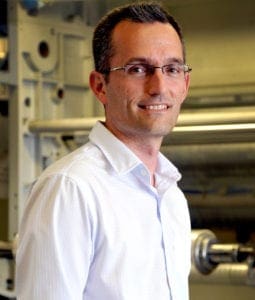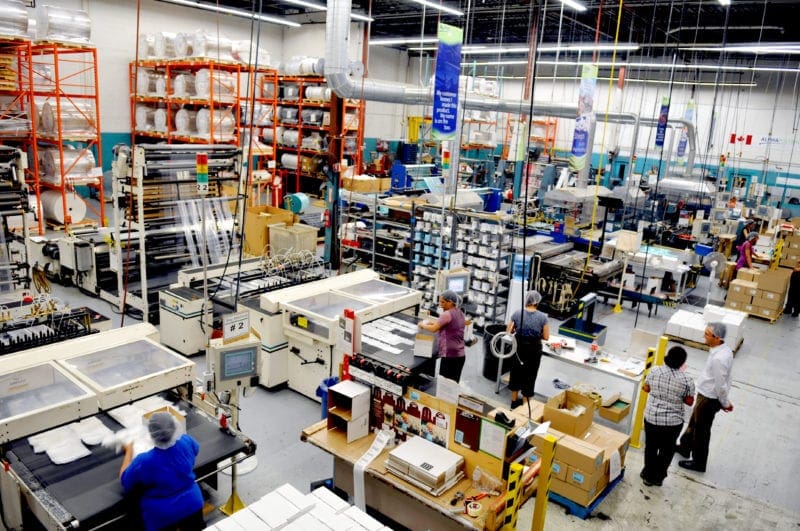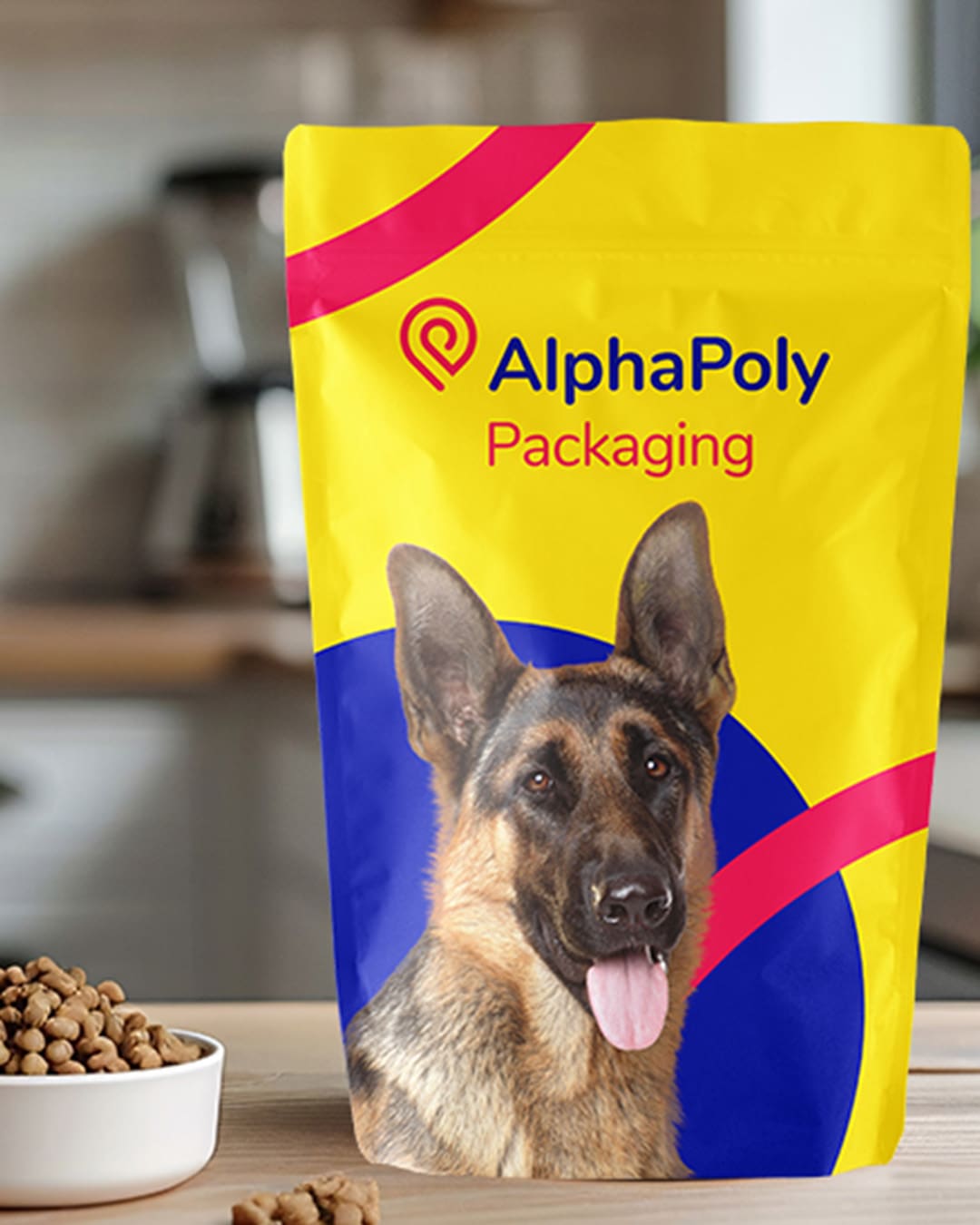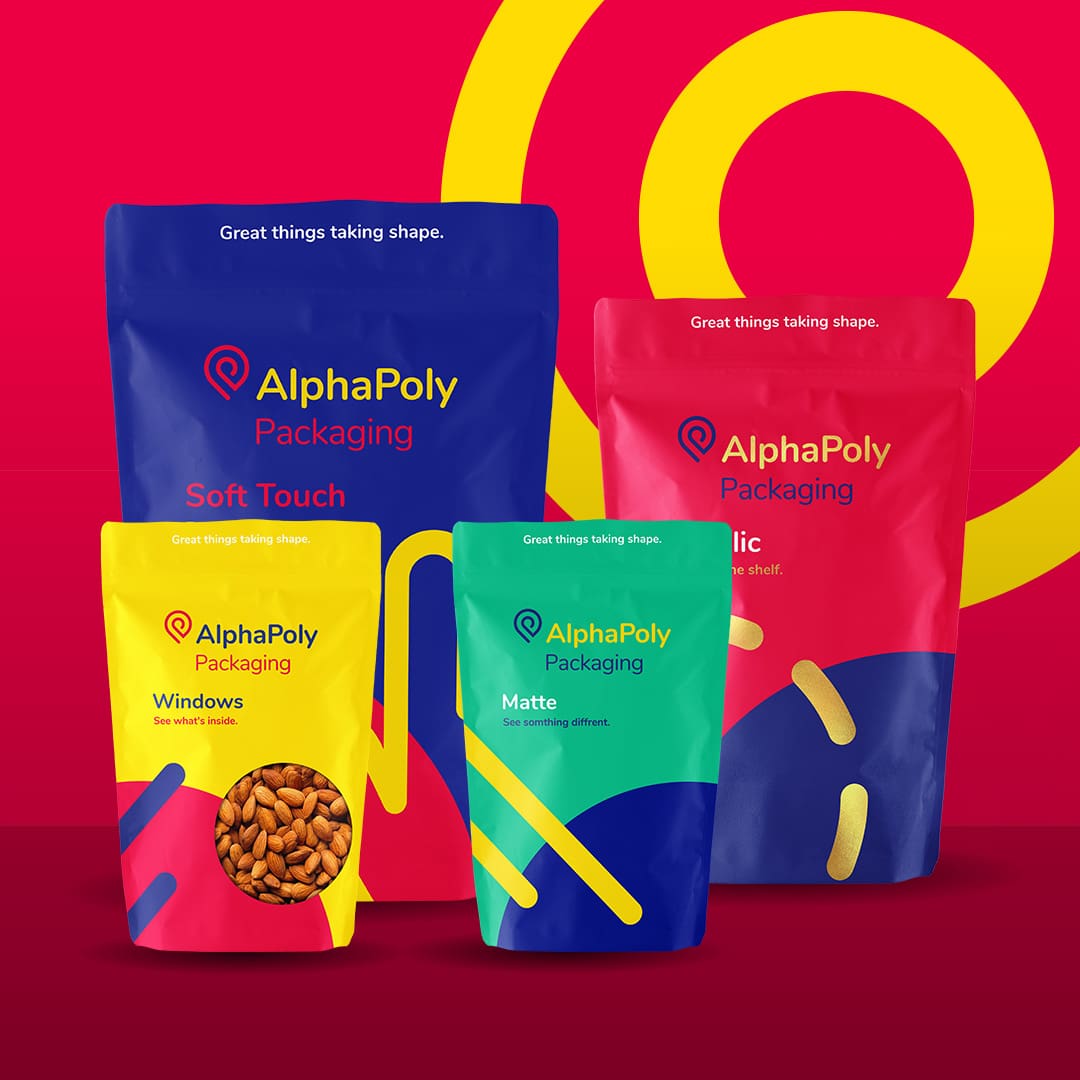FTA member Alpha Poly Packaging Solutions turned 25 last year, no small feat for a company that started with two employees and a 3,000 sq. ft. space. But if recent business activity is any indication, the company is in for an even more successful next 25 years. “We’ve seen nothing but growth,” observes Patrick Kerrigan, the company’s president. Specifically, we are tracking at 11 percent growth for 2014 and we are looking for 20 percent for 2015.” Here, Kerrigan discusses his company’s founding and history, how it’s poised for continued growth and what makes it tick.
FLEXO: Talk about how Alpha Poly Packaging Solutions got started. What are its values?

Patrick Kerrigan: In 1989, Alpha Poly Corp. was founded by Paul Kerrigan. It had two employees, two bag machines and 3,000 sq. ft. of space to use for manufacturing garbage bags.
Today, the transition to a second familial generation is more or less completed and Alpha Poly Corp. is a much different company, with 54 employees, 53,000 sq. ft., more than 250 stocking products and a wide variety of custom printed and plain products sold across Canada and the U.S. market, not to mention a slightly different name.
My dad and I continue to lead with a philosophy of building relationships based on integrity and trust. We look at our customers as business partners, where we are there to help them grow. And as they grow and prosper, so will we.
FLEXO: What are some important milestones in Alpha Poly Packaging Solutions’ history?
Kerrigan: There have been a few landmark events in our company’s life:
1999—We moved to a 20,000 sq. ft. plant and purchased our first high performance bag machine, which made Alpha Poly one of Canada’s leading manufacturers of food portioning bags
2000—Within six months of moving, we had the opportunity to acquire another company and completed the transaction in 90 days. This company sold to many of the same customers with a wider product range than Alpha had. Overnight, our sales doubled
2004—After only five years we ran out of space again, so we moved to a 33,000 sq. ft. facility. Because our product mix was made up mostly of commodity products, we wanted to increase the manufacturing of custom plain and printed product. To do this, we ordered a state of the art, 6-colour Uteco flexo printing press from Italy
2009—We underwent a productivity improvement program with a specialized outside consulting firm. By the end of the six month project, we had reduced our labor by 30 percent and increased our output by 65 percent
2010—Alpha Poly underwent a rebrand and name change. After many years of our customers knowing us as Alpha Polybag Corp., we realized that if we wanted to branch into printed laminated roll stock and bags, we needed to change the perception we were no longer solely a polybag supplier
2013—Alpha was targeting the next phase of growth and made the capital expenditure of more than C$3.5 million on some new equipment:
– W&H 8-colour with insetter capabilities
– Nordmeccanica Super Simplex SL laminator
– Deacro 610 slitter
While the facility waited for the new equipment to arrive, it underwent a massive renovation in the plant and office, as we added 20,000 sq. ft. of space. During this time, large portions of block walls were pulled down to make way for the new equipment and the distribution area was picked up and moved into the new space
FLEXO: How big is the company now? Number of employees, presses, shifts?
Kerrigan: We are currently running five days a week, 24 hours a day in printing with two presses, lamination, slitting and bag conversion (13 machines total). We have 54 people on staff with the addition of three new employees planned in the coming months as we ramp up our sales efforts.

FLEXO: Where are Alpha Poly Packaging Solutions’ primary markets? What are its primary markets?
Kerrigan: Our current target markets are the food industry, nutraceutical, bakery and confectionary sectors.
FLEXO: Talk about graphics quality at Alpha Poly Packaging Solutions—its importance, challenges it presents, ways the company ensures high quality, prepress capabilities, etc.
Kerrigan: We pride ourselves on using the latest and greatest plate materials and prepress technology to be at the front of the pack when it comes to printing. We surprise a lot of people when they see our combination printing, specifically our ability to keep a nice, rich black but also print a clean 133 linescreen image. On our old Uteco press—before the W&H machine came in—our competitors would ask who printed some jobs for us, as they knew we only had a 6-colour machine and they couldn’t believe the product was run in six colours.
Our philosophy from day one has always been to separate the job to run with our current anilox rollers. I don’t believe in running a press department where the anilox is selected after the plates come in, something that would require 20-30 rollers be inventoried. This would only result in large amounts of press downtime while rollers are swapped out to try and match the continuous tone at press side.
I would say we are a small company but we think big in the way we look at quality. Our in house graphics department is very involved at the start of any project, ensuring the job is built thinking about flexo at the beginning rather than after the art has been finalized. We are continually testing new stickybacks, plate materials, sleeves and anilox rollers, ensuring we have the best materials to print.
We are using an X-Rite eXact Advanced spectrophotometer to measure colour press side and store for recall on repeat jobs, measuring colour to a Delta E of 2 or better. On press, we are using the BST Q-centre 100 percent defect detection system to identify print artifacts that might have gone unnoticed by the human eye or if the operator walked away from the viewing system.
FLEXO: Where does process control fall in importance for Alpha Poly Packaging Solutions?
Kerrigan: Process control is vital to our success. Back in the summer of 2013, we decided that being Good Manufacturing Practices (GMP) certified was not going to cut it for the future. We moved to become International Featured Standards (IFS) Packaging Association of Canada (PAC) secure (Hazard Analysis And Critical Control Points, or HACCP, for packaging) certified by the end of 2013. In December of 2013, Global Food Safety Initiative (GFSI) recognized this as a global standard in food safety.
Article originally published by FLEXO February 19, 2015







